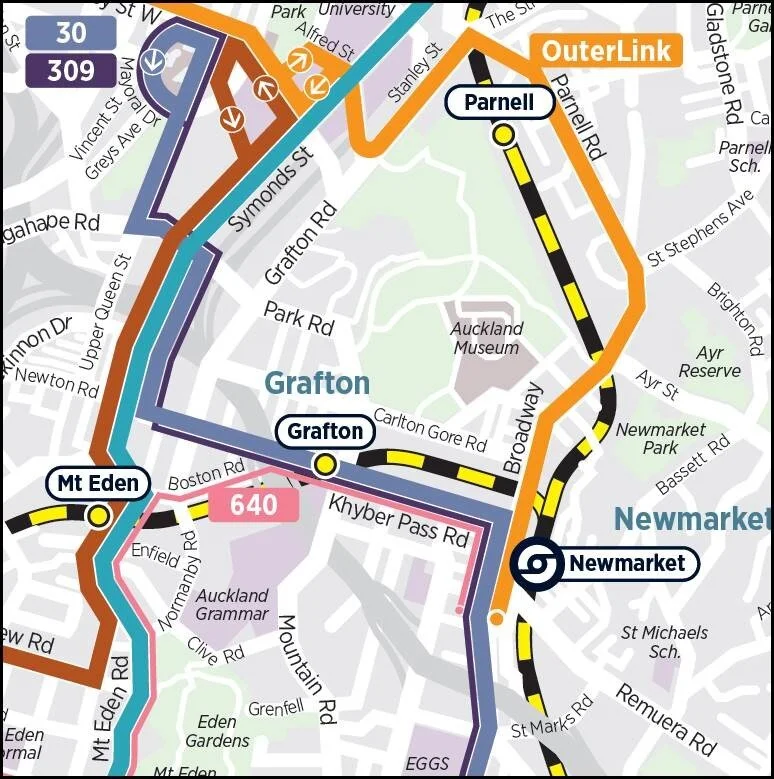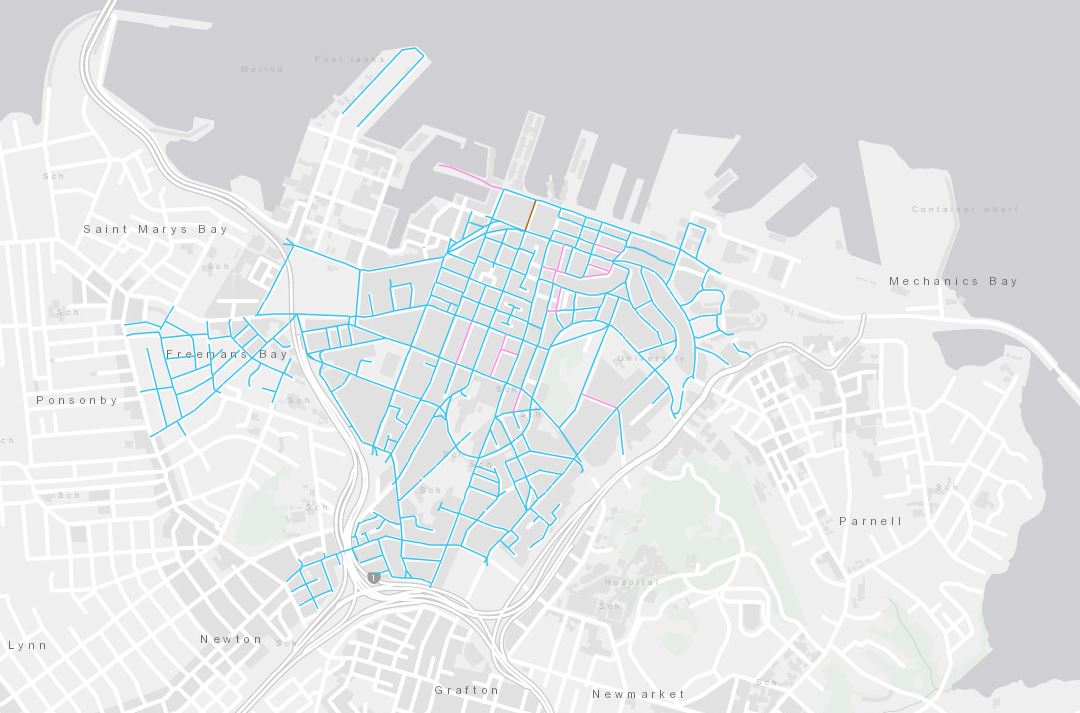Putting the CONTROL back into Council Controlled Organisations (CCOs) – especially Auckland Transport
Transport is an essential and unavoidable part of virtually every Aucklander’s life. The way that infrastructure and transport services are delivered affect the way that residents move around their city. Whether you walk, cycle, drive, or use public transport, you’ve almost certainly encountered New Zealand’s largest Council Controlled Organisation (CCO) – Auckland Transport (AT)
Along with being the largest CCO, Auckland Transport is also the most unusual. It has not the usual one, but three pieces of legislation that govern them and their actions. As a CCO, Auckland Transport is responsible to Council through monthly reporting to local boards, and quarterly reporting to the Mayor and Councilors.
As an elected representative of Auckland, I ask myself – ‘how has Auckland Transport performed for the people of Auckland?’
In short, what AT has done well, they have done very well. However, in other situations where AT has performed poorly, they have performed incredibly poorly. So what has AT done well? Public transport projects and services are an undoubted success of this CCO. Public Transport user numbers are well ahead of initial projections. Very soon we will see 100 million public transport trips per year, up from 57 million prior to the supercity formation in 2010.
However, the following issues have been dealt with very, very poorly:
• On-going Quay St congestion;
• Parnell Business Association only getting one weeks’ notice that AT were closing one lane of Parnell Rd for two weeks;
• Remuera’s Clonbern Rd Carpark top level being closed without notice to Remuera Business Association;
• The whole debacle over the proposal to remove several carparks and add a whole lot of raised pedestrian crossings in St Heliers and Mission Bay, with very little evidence (some say no evidence) to support these proposals;
• Add that to a ‘no show’ at a public meeting, which had in excess of 600 people in attendance.
There have been huge problems. In my opinion, the heart of all the issues lies with their communication and engagement – or should I say the lack of it.
What can be done?
Legally there is only one tool with which the mayor and councilors can use to hold this ‘arm’s length’ CCO’s to account. It’s called the Statement of Intent process.
Under legislation, each CCO is required in their Statement of Intent to:
1. Outline their intentions and activities for the forthcoming year
2. Provide an opportunity for shareholders to influence the direction of the CCO
3. Provide a basis of accountability for the directors of the CCO to its shareholders
Whilst these are great objectives, in my opinion, the way they have been interpreted hasn’t worked for Auckland.
In August 2018, I moved a resolution for council staff to undertake a review of the statement of intent process for our CCOs.
Following that action, in February this year I further moved the scope for the CCO review. Then, again in April, along adding more detail to all CCOs, I specifically put up ten resolutions to tighten our control over Auckland Transport as part of the next year’s Statement of Intent process.
Surprisingly to me, no other Councillor had ever done this before. In fact I was the first to officially tell AT very clearly that their engagement and communication was unsatisfactory.
With the support of the Mayor ( who seconded my resolutions) and nine other councilors, the resolution was passed- not unanimously but passed. AT were also directed to report on congestion reduction (as some say that AT are making matters worse). Another one of my resolutions now requires AT’s attendance at any public meeting should they be asked by a Councillor or if a local board resolve as such. Remember the St Heliers Business Association and St Heliers/Glendowie Residents Association co-hosted a public meeting in St Heliers, with over 600 people present, but AT chose not to attend.
So where are we with Auckland Transport (AT) and their plans for Mission Bay and St Heliers?
Thank you to those who did turn up in St Heliers for the public meeting. I can only apologise (again) that Auckland Transport did not show up for this meeting (as expected), so did not explain their position and reasoning behind their suggested ‘safety improvements.’
Your attendance and submissions did make a difference.
In both cases (Mission Bay and St Heliers) the residents associations and the business associations have done a tremendous job liaising through me with AT. They have now both been told by Auckland Transport that all engineering solutions are off the table.
Working groups for both areas have now been set up. These consist of representatives from the respective residents and business associations, local board and myself.
In Mission Bay’s case, the first meeting has already happened. This covered, amongst other things, commitment to get an independent review of the data which led AT to develop their suggested ‘improvements.’
With St Heliers, we are waiting on agreement between AT and the residents and business association re a couple of issues and then the working group will meet and work through issues similar to Mission Bay.
As I sit on both working parties, I will keep you updated on progress each month via this newsletter.
CRL- is it a financial ‘blow out’, expected increase or still a tentative figure?
Short answer- we still do not know how much this project will actually cost.
I wasn’t a Councillor when agreement was reached to fund and deliver this project. So, I wasn’t one of the Councillors who agreed twice to a 50/50 cost share split with government, nor a Councillor who agreed to the former ‘cost’ when agreeing to the project in 2014. However, what every Councillor (including me) did agree to this Council term, was increasing the rider capacity of the CRL by 50%. This involves extending the length of train platforms to accommodate trains of up to 9 carriages in length (up from a previous maximum of 6 carriages per train.)
Why? Because time and time again we deliver projects that take so long to be delivered that, shortly after they open, they are already at or exceeding their user capacity.
There are currently 21 million train boarding’s per year across Auckland. Rail transport ridership has more than doubled in the last 5 years and is projected to continue to be a strongly supported as a desirable public transport option into the future.
Further to these ever-increasing train use statistics, we know that it would be incredibly difficult to increase the capacity of the CRL once it is complete. This is because the project is largely located underground. Staff say to extend the stations to meet demand after completion would require the whole CRL route to be closed for 2 years so that workers could safely deliver the extensions. That would hardly be practical for Auckland! Increasing capacity now ensures far better value for money than completing remedial works shortly after.
So what was actually agreed in 2014?
Councillors and the then mayor agreed to go ahead with the CRL on the cost estimate of $3.4 billion. This figure was an estimate only and there have been significant changes in the construction climate in general since then.
There has been a significant increase in demand for infrastructure construction in Australasia since 2014.
Increases in demand always lead to price increases in industries where it is difficult to quickly expand supply – like high-level infrastructure construction.
It is only natural that a 2019 estimate is more accurate than the projections that were made back in 2014, before construction even began.
Since 2014, the cost of the CRL has seemingly ballooned by $1 billion on the previous estimate from 2014. However, it was always expected by Council that costs would change between the 2014 estimate through to the CRL’s completion in 2024.
What will the extra money be spent on?
The revised cost envelope of $4.419 billion reflects higher costs in four key areas:
Contingency and escalation costs ($310 million)
Construction increase costs ($327 million)
Accommodating longer, nine-car trains ($250 million)
Non-direct cost ($152 million)
Where is the money going to come from? Of the billion-dollar increase, Auckland Council is required to contribute one half of the extra cost and Central Government will foot the rest.
What is the best news of all, is that all of the additional $500 million Council contribution will be paid without the need for a corresponding rate increase. This is due to smarter financial management of Council matters – not budget cutting!
Saying NO to government controlling our parks.
It was a bit of a shock to see that this government was wanting to take back control over how some of our parks and reserves are managed.
Last month we were advised that Council’s authority to effectively manage Auckland’s parks and reserves was severely threatened by a proposal from central government to revoke 44 of the 50 Ministerial powers delegated to local authorities under the Reserves Act. If this occurred, it would undermine grass root, local decision-making and lead to inevitable delays and costs caused by the need to seek Ministerial approval for the majority of actions currently undertaken by Local Boards and Ward Councillors.
To add to its illogical reasoning, no justification for the proposal was provided. It is also completely unclear what problem, if any, it was supposed to fix – there is a saying - if it ‘ain’t broke don’t fix it!
So, I moved a resolution this month at Environment and Community Committee supporting a submission against the change. It was unanimously supported.
Our submission will now go to the Department of Conservation and we will receive a report on that in August. However, we still don’t know when the final decision will be made. In the meantime, Council stays in control of its Parks and reserves.
What’s coming up this month?
Freedom Camping By-Law decision…..( I’m not at all happy where this has ended up. My only decision to date has been to take this to consultation)
Release of third quarter financial results ( how are we tracking re debt, savings and spend)
Value for money results
Climate Emergency ( do we have one? - should we declare one?)
Finally
I have decided to put my hand up and stand again for the position of Auckland Councillor representing the Orakei Ward in the forthcoming October elections. With the boundary changes now bringing Parnell, Newmarket and Grafton into the Orakei Ward, I thought it appropriate to officially launch my intention when I spoke to Parnell Rotary on June 5.
Without doubt, it would be a great honour to continue supporting the communities and residents from the Orakei Ward after October.
Thank you
Desley Simpson





